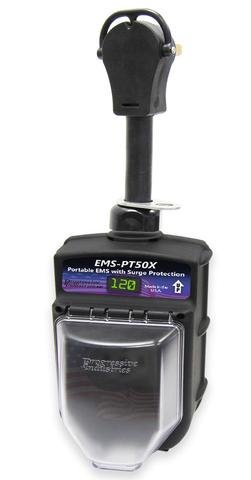

One rainy day, as a young boy living in a mobile home, I stepped on the metal threshold and got shocked just a bit. This had never happened before. A little while later, I heard my step-mom scream as she entered our mobile home just after me. She, too, had gotten shocked.
When my dad came home, the sun had already come out, and everything was dried up, and he did not get shocked as mom and I did. Once Dad became aware of the problem, he called my grandfather over and they began to look for the source of wayward electrical current. After a little troubleshooting, they found that the all-important grounding wire had come loose from the grounding rod.
“What has the grounding wire and rod got to do with current flow?”, you may ask. Without going into great details about current flow and electricity, I will explain it in the simplest terms possible.
The most basic principle of current flow is that current always flows through the path that is least resistant. All types of electricity require a grounding point so the current has a path to flow. The term “ground” literally comes from the fact that typical home electricity (AC) flows through a grounding rod that is embedded in the earth.
Electrical current normally flows from the “hot” wire (usually a black or red wire) and makes its way through the “neutral” wire (usually a white wire) in the AC path until its final destination to the grounding rod. When a grounding connection is interrupted by a disconnected path, every conductive surface has the potential to become an electrical “hot” and current will use whatever is the least resistant path to flow. More precisely, any conductive surface of the RV becomes a “hot skin” in which current has the potential to flow. In my case, when I stepped on the wet threshold (wet surfaces greatly reduce resistance), I became the path least resistant to current flow. This is because our unprotected body literally becomes an alternate path to ground.

RVs are unique when compared to the typical house or mobile home. Most of us, when arriving at a campground, will not drive a grounding rod into the ground and connect a grounding wire to it from the RV. When landing gear is extended to the ground with wood blocks or plastic pads under the gear, it is a poor grounding conductor. The painted surfaces on landing gear also act as an insulator, preventing a good ground. Electrical grounding for an RV is primarily dependent upon correct wiring at the campground’s electrical hookup.
Therefore, if at any time you feel a slightest tingle or shock upon entering your RV and it feels completely different than a static shock you may commonly feel, immediately disconnect the AC power from the power pedestal and report it to the campground manager. If it is determined the campground power is properly grounded, then the RV’s AC electrical system needs to be evaluated by a professional electrician.
The safest alternate electrical protection is to use an RV electrical management system (EMS). EMS protectors are superior over most surge protectors and usually cost more. EMS units and surge protectors are available in two types, portable and hardwired. The advantage of EMS protectors and some surge protectors are that they not only protect against voltage surges, they also test the line quality before power is turned on. If the there is any fault in the campground power source, the electrical protector will not turn on and will usually indicate a fault code. Caution: Never ignore an electrical protector’s fault code(s). DO NOT bypass a protector that has shown an electrical fault until it has been determined that the protector unit has failed to operate correctly.
Additional Electrical Tips
Continue reading part 2: RV Electrical Safety and Hot Skin Condition – Test Equipment
We recommend only the best—Progressive Industries Portable Electrical Management Systems.
©2011-2025 Fifth Wheel Street and Fifth Wheel St. All Rights Reserved. Use of this website constitutes acceptance of the Privacy Statement and Terms and Conditions of Use.